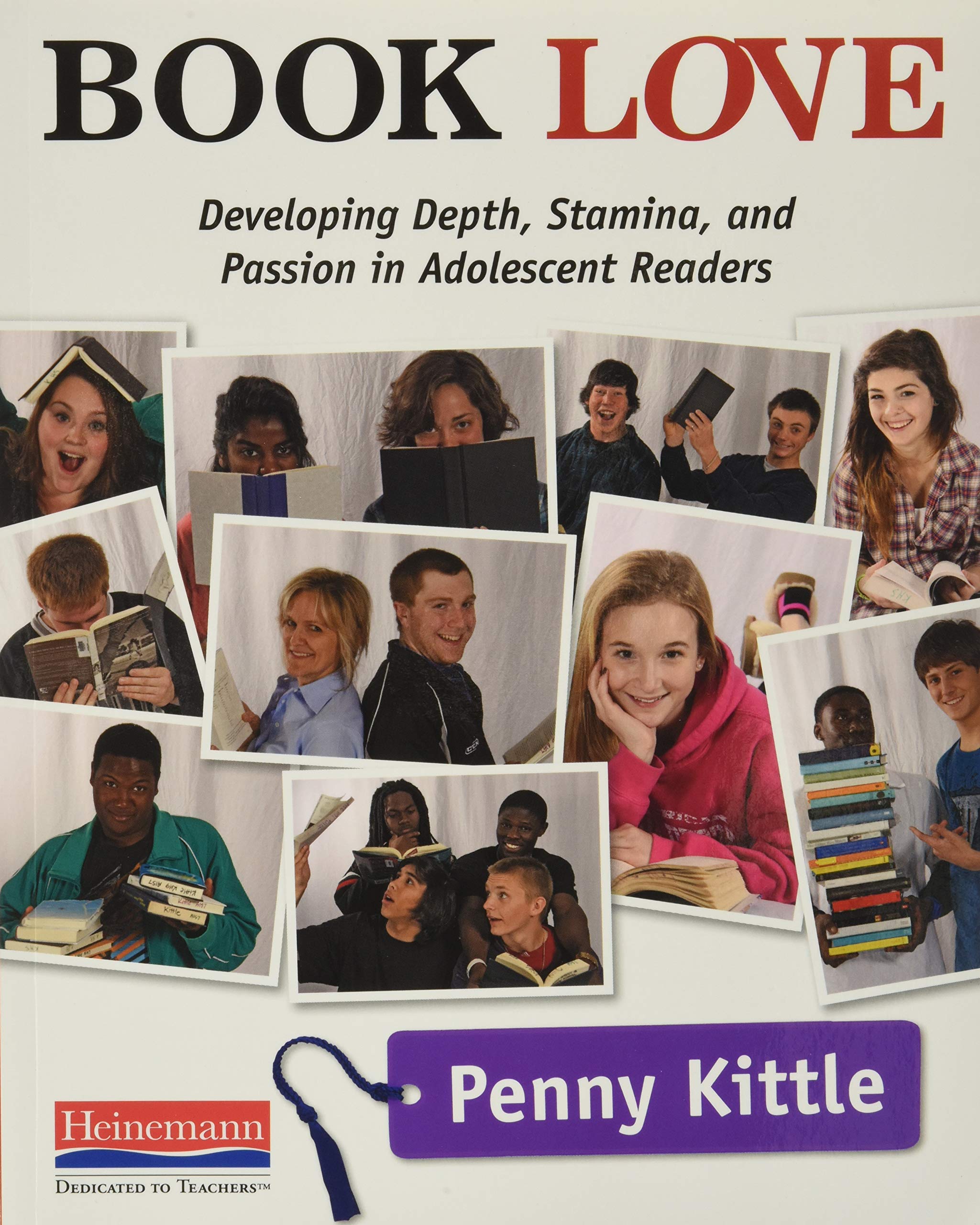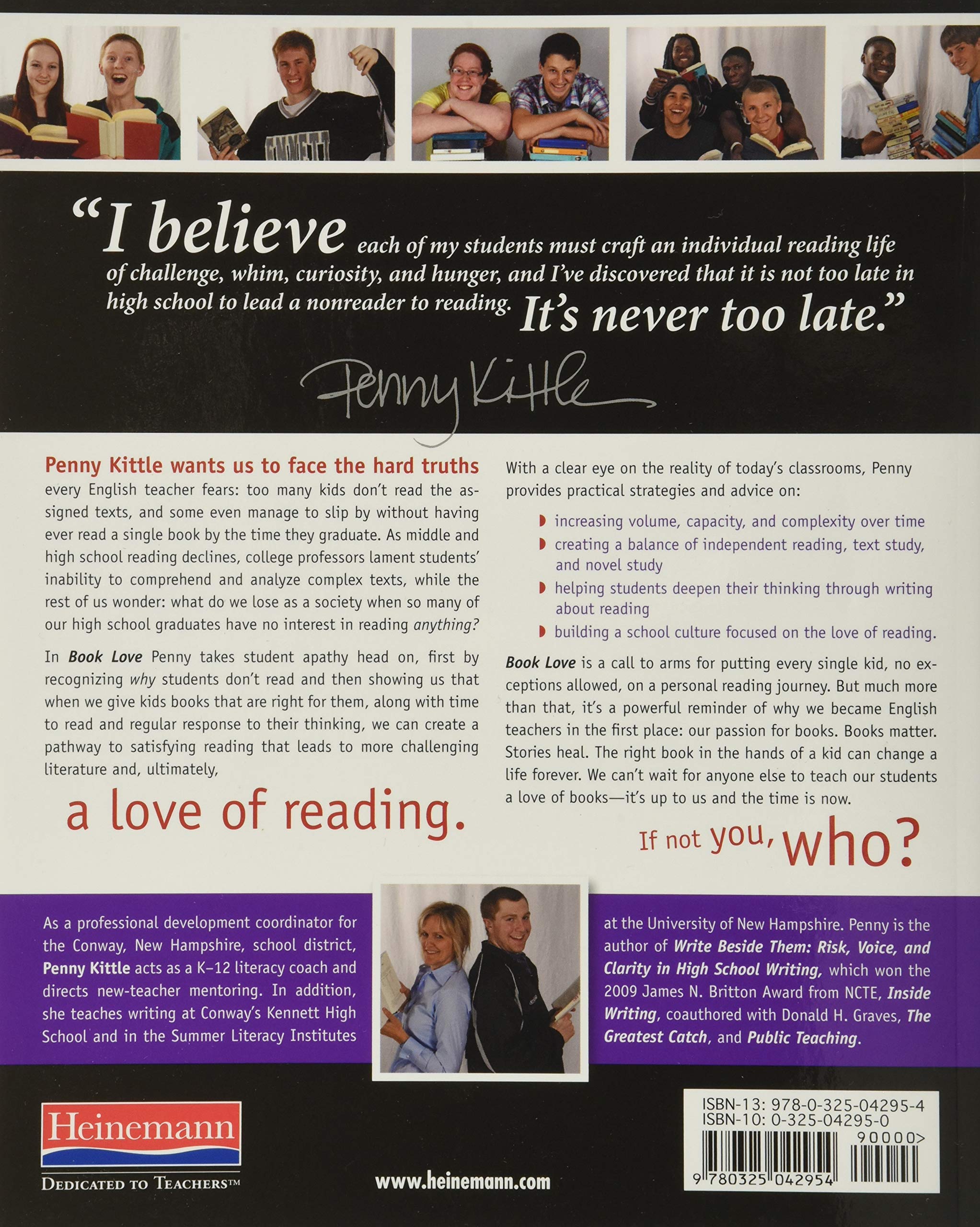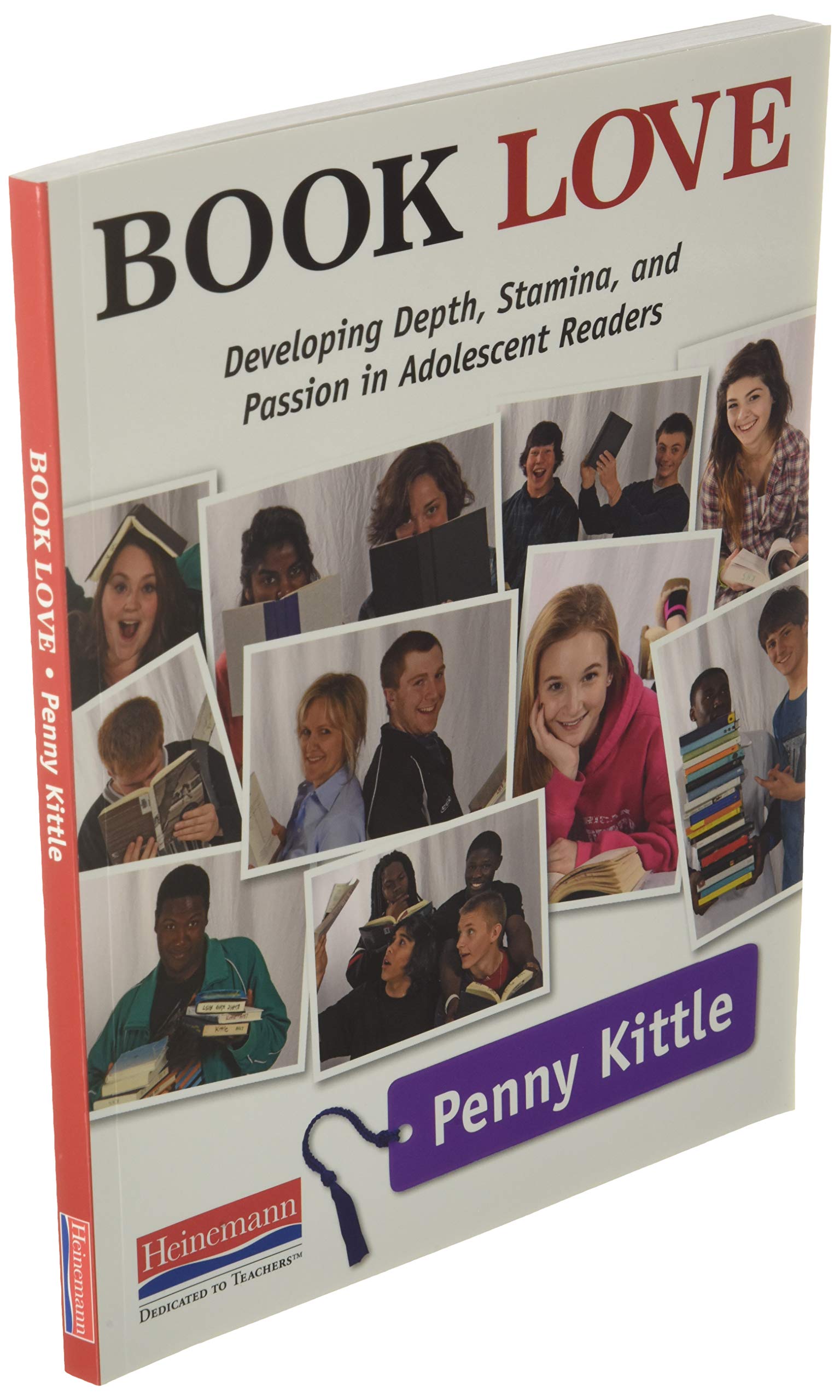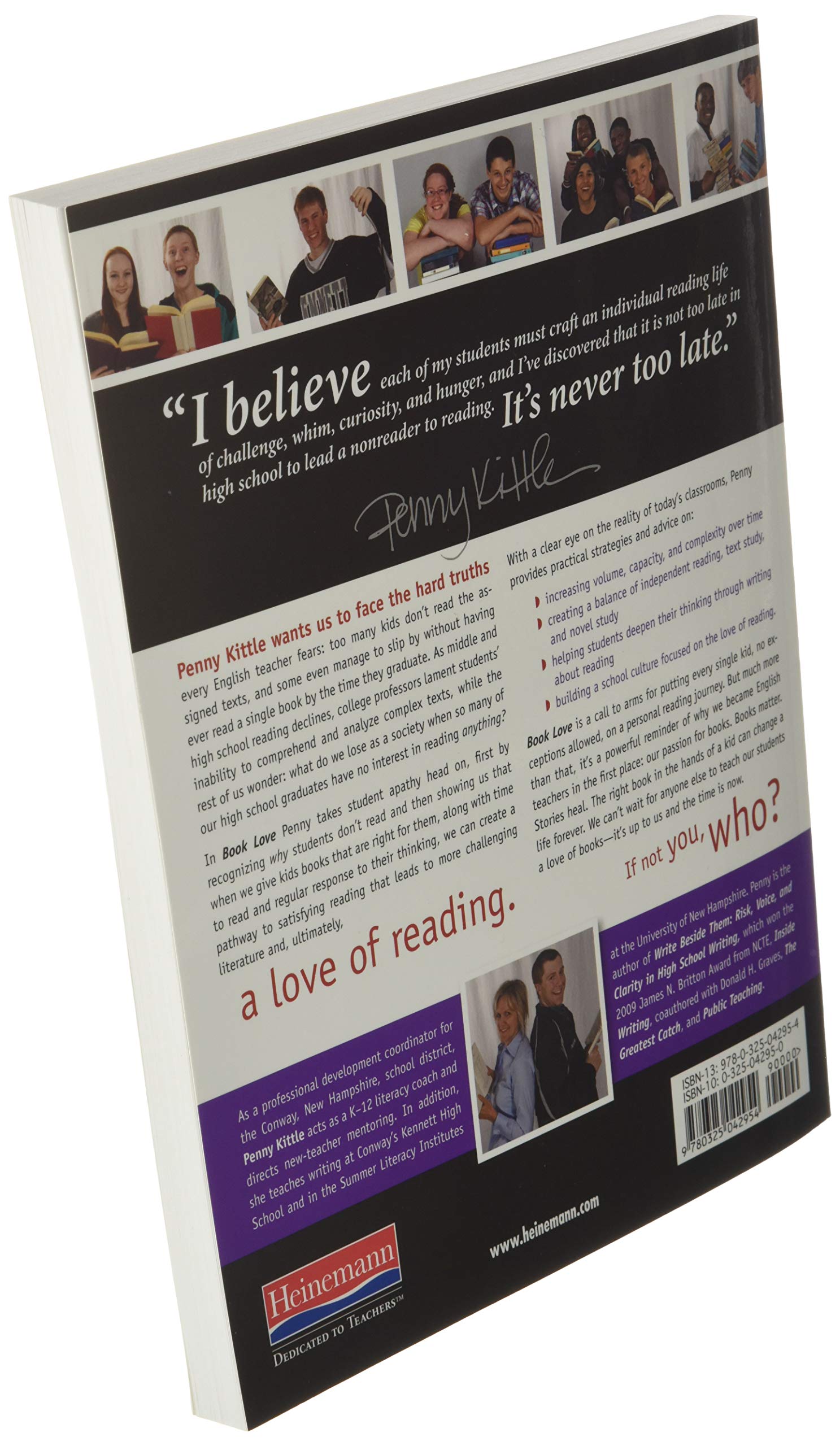




Full description not available
B**4
A must have on any teacher's bookshelf.
How many times have we heard the laments of parents and teachers, “if only my kids read more”? Penny Kittle in Book Love tackles the problem of students who don’t read, and offers English teachers tactics to combat this problem. The summative message of her book is that the first step in getting students to read is to get them to enjoy what they are reading. For a future teacher, this book is a treasure trove of ideas to get kids to enjoy reading.She begins her book by informing her readers of the accepted fact that only twenty percent of students actually read the literature they are given in class. Combining that fact with the idea that students will have to read between 200 and 600 pages in college weekly to be successful, it creates a problematic situation that lines students up to fail once they hit higher education. It is obvious that students need to get reading, and they need to do so quickly!As a pre-service English teacher, one of the thoughts that haunts my psyche, is what if the kids won’t read? I love the ideas that Kittle introduces to promote reading success. First of all, she has students measure their reading speed in pages per week and then measuring how that changes over the course of the year, and then she gives interesting ideas on how to keep track of their reading. My favorite of these is have students do “roller-coaster” reading, in which they balance complex reading with enjoyable simpler reading. Every time they finish what they deem deep, difficult reading, they follow it up with shorter more lightweight piece. It keeps the kids from burning out from the harder texts, and it keeps them reading. She also has the students rank their books in terms of difficulty and also has them reflect upon how their reading rate changes over the course of a term, semester, etc..While I love her ideas, the sheer volume she has her students read is my main, and really only point of contention with this text. She says that it is within reason that students can read up to sixty books a year. Even if students can read that much, the question is “should they?” To me, that many books can encourage “speed reading” which is something that Kittle chastises for being ineffective. It also does not take into account (as referenced by the student reading logs in the book) the textbooks that students read in other classes. I totally understand and support having high goals for students to strive to achieve, but I feel goals that are too high could do students an ultimate disservice.My absolute favorite portion of Kittle’s book is her chapter on conferences. Not only does she provide an extensive rationale of the positive influence of conferencing she also gives her readers guidelines to follow for the conferences. To me, this chapter is the section that I can foresee myself going back to again and again during my teaching career. She gives guiding questions to use when dealing with all different types of students (for example: those who won’t read, those who are struggling, those who don’t feel challenged, etc). Along with these guided questions, she gives examples that she faced in her own career and how one can expect these conferences to go. She makes you really feel like you’re in the classroom with her students, and her word choice shows you just how much of a difference she can make with only a three or four minute chat with her kids. It is at this point in the book that I realized that the trepidations I have towards teaching are totally normal, every teacher has faced them, and because of that, people like Kittle have given us strategies to fall back on that actually work. It was at that moment that I was very thankful that I bought this book.Despite a spot or two where I disagreed, I would wholeheartedly recommend Book Love to every teacher, in-service or pre-service, because its strategies are so useful I can’t imagine myself hitting the classroom without it on my bookshelf. Whether it is creating a classroom library (something she makes sound so easy) or her description of “big idea” books, you will find yourself saying both “why didn’t I think of that” and “I can’t wait to use this!” I believe that every teacher, of any subject can create a fun and comfortable classroom of readers by taking Kittle’s tactics and molding them with their own ideas and personality.
A**R
Reading
Excellent book! I finished it in one night! I can't wait to use what I learned this year!
C**R
If you are an educator, READ THIS BOOK
This book provides all the reasoning behind the extreme importance of increasing independent reading time for all students. By using book talks and establishing or increasing the classroom library, Kittle gives us the recipe for inspiring a love of reading in all students. While Kittle does not provide a step-by-step guide on how to implement a focus on reading across the curriculum at your school, she certainly points to the justification and benefits of doing so. Share this book with your colleagues. For more nuts and bolts on how to implement the writing workshop in your classroom, see Write Beside Them, also by Penny Kittle.
K**G
Transformative
This book changed my approach to teaching. My 8th grade team and I were able to take Kittle's ideas and implement them effectively in the classroom and saw a noticeable change in our students.
S**2
One of the Best!
This is one of the best, most inspiring “teaching books” that I’ve ever read. Penny Kittle has a love of reading and books that makes me know we are kindred spirits. Her ideas and experience for sharing that love in her school inspires me to keep doing what I’m doing.I devoured this book slowly, both so I could absorb the thoughts and so my wallet could recover from all the amazing title recommendations. You might say that’s not devouring then, but I assure you it is.
V**I
Attention Book Lovers!
I bought this book last summer and it has become one of my favorites. I carried this book around with me all year, so it looks pretty worn up by now. I drew lessons from it all the way to the end of the school year. It is a must-read for teachers of all grade levels. It provides lots of good practical tips for encouraging reading and fostering the love of it.
M**P
An action plan for English classrooms!
High school English teachers, this is what we've been waiting for! Kittle shows us why and how to motivate our teen students to find books they love and, in the process, improve their reading levels - which is something we are not accomplishing with our current, outdated methods. This book has inspired me to be determined: I WILL find a way to fund, stock, and maintain a classroom library that will get kids reading, thinking, and writing. Thank you, Penny Kittle.
M**R
Book Love
Book #122 Read in 2016Book Love by Penny KittleThis book was a great read about establishing and maintaining a community of readers in your classroom. I shared parts of it with the students in my Young Adult Literature and would recommend it to my teaching colleagues. I enjoyed it.
Trustpilot
1 week ago
1 week ago